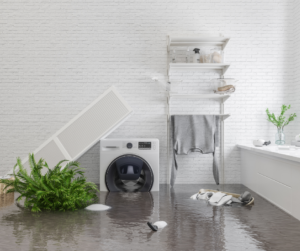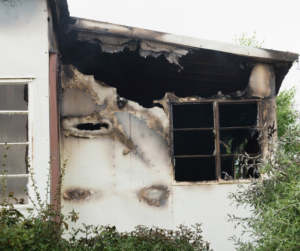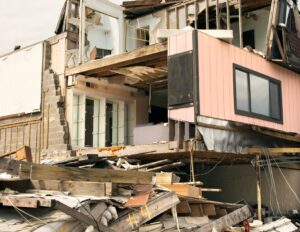Florida gets hurricanes, everybody knows that — and we get tornadoes too! In fact, Florida has a higher frequency of tornadoes than any other state in the American southeast. As well, in Florida, hurricanes and tornadoes often happen together since a hurricane can create the right conditions to generate tornadoes. In this article, we’ll provide an overview of how these two types of weather events develop in Florida, as well as the type of damage each causes.
What is the Difference Between a Hurricane and a Tornado?
Hurricanes and tornadoes are similar in that both involve extremely high winds that vortex around a center. The most obvious differences between them are their respective size and duration. A hurricane can be hundreds of miles in diameter and last weeks. Tornadoes are a few hundred feet wide at most, and usually last just a few minutes. Both can be massively destructive.
How Does a Hurricane Form?
Hurricanes and tornadoes also differ in how each of them develop. Hurricanes form over the ocean near the equator. The warm, moist ocean air rises upward, creating an area of low pressure below. This low pressure area draws in the air from the surrounding higher pressure area, which then rises in turn as it takes on moisture and warmth. As the process continues, the surrounding air spirals around the low pressure center with increasing speed, ready to take the place of the warm air that is rising. Here in Florida, as we are north of the equator, the wind spirals in a counterclockwise motion.
As the moist air rises, it cools and forms clouds and thunderstorms. The system of swirling wind and cloud formation continues to grow, fed by the warm, moist air of the ocean. The center, or eye of the storm is very calm, however some of the strongest winds are on the edge of the eye. When the circulating wind reaches a speed of 74 mph it is called a hurricane.
How Does a Tornado Form?
The exact process of how a tornado forms is not yet known, however there are certain storm conditions that are more likely to generate tornadoes. Supercell (or rotating) thunderstorms with their persistent updraft and strong vertical wind shear produce the conditions most likely to spawn dangerous tornadoes. A vertical wind shear is the combination of a change in both wind speed and wind direction as the elevation increases. This creates a sort of atmospheric torque, causing the rotating motion characteristic of a tornado funnel.
The rotating tornado funnel consists of moist air that condenses into water droplets as it descends from the thundercloud towards the earth, giving the funnel a white-ish color to start. Once the funnel reaches the ground, it can pick up dirt which gives it a darker color depending on the color of the dirt. In Florida, tornados are often difficult to see, hidden within copious amounts of rain and hail.
Tornadoes can form and dissolve extremely quickly and unpredictably, since they are dependent on very specific and variable conditions. They can last from a few minutes to a half an hour with wind speeds from 100 mph in a weak tornado to as much as 300 mph for a very strong one. They come in a variety of shapes as well — causing anything from a thin, surgical whip of destruction to a wide swath of devastation.
In Florida, tornadoes caused by supercells occur most often in the spring (February to May) and the fall/winter (October to January) when supercells form ahead of a cold front.
How Does a Hurricane Generate a Tornado?
Hurricanes almost always spawn tornadoes once they hit landfall. While hurricanes do not contain supercell thunderstorms that produce wind shear, they do have a strong updraft. Once they hit landfall, the uneven terrain of land increases the possibility of wind shear, the final necessary ingredient for tornado formation. Land supplies friction to the wind, slowing it down at ground level, while higher in the atmosphere the wind speed remains high. The combination produces the twisting motion necessary to create a funnel.
Tornadoes are more likely to happen in the outer bands of the hurricane, about 50 to 200 miles from the center (depending on the hurricane’s size), with the right front of the hurricane carrying the strongest winds that are most likely to generate tornadoes. Fortunately, while still dangerous, tornados that are generated from hurricanes are generally much weaker than those from supercells. In Florida hurricanes and their tornadoes generally occur in the summer from June to September.
Damage From Hurricanes and Tornadoes
The high winds of either a hurricane or a tornado produce the same type of damage, including flying debris, ripped up trees, roof damage or other extreme building damage. The difference is that wind damage from a hurricane will be more wide-spread, whereas tornado damage will be localized to exactly the path of the twister. Tornadoes, especially ones that are formed from supercells (not from within a hurricane) can have extremely high winds that can completely flatten the area it travels through.
Regardless of whether you’ve experienced storm damage from a hurricane or from a tornado, Florida Gulf Mitigation can help you assess and secure the area, as well as reconstruct. We are ready to respond at a moment’s notice, on call 24/7.







Give us a follow!